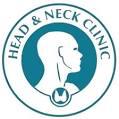Robotic Cancer Surgery
TORS oropharyngeal cancer The robotic Oropharyngeal Cancer Surgery Solution (ROS) works together with a state-of-the-art robotic surgical system to improve results, reduce postoperative pain, and decrease risks created by non-robotic treatments. Unique modular design allows surgeons to change the size of the device to fit the body type of each patient.
The robotic TORS oropharyngeal cancer system is the next generation of robotic Cancer surgery, which has improved outcomes considerably over the past decade. Its high resolution, which allows lenses to be placed around tumors, helps surgeons to be more precise and confident in their actions. It also allows patients to have fewer painful reconstructions due to the precision nature of the system
The robotic TORS is a surgery device that allows the surgeon to perform radical, stage I- IV oropharyngeal cancer surgery without needing the patient to be awake or under general anesthesia. The use of this novel technology is able to reduce both the surgery time and blood loss in patients with advanced oropharyngeal cancers, while also sparing critical anatomical structures such as the larynx.
It is also used for treating post radiation small tumours of throat ( Larynx / Hypopharynx / Tonsils / Base of Tongue / posterior pharyngeal wall ) .
It is also used for thyroid surgeries through RABBIT approach .
Current systems of single port TORS machine has made surgery at Larynx, Hypopharynx and Skull Baseeasily accessible.
Role of Robotics in Cancer Management
Robotics has a comprehensive role in cancer management. It can provide information not only to the physician but also to the patient. This will support the patient’s decision-making and unique needs of treatment, which may include monitoring changes in vital signs and respiratory rate, or changes in physical performance. The process of using robotics is highly beneficial for daily healthcare and can make specific suggestions about lifestyle changes that can help prevent the emergence of cancer further down the road.
Stem Cell Therapy, Tumor Vaccine, and Gene Therapy are very promising technologies for cancer treatment. However, none of these approaches have been satisfactory in the long-term because tumors can become resistant to treatment. This has great implications on long-term survival and quality of life. The role of robotics in cancer management is that they provide assistance in treating patients and improving their quality of life. Robotics will also help in improving on delivery processes involved in cancer treatment
Robotics can play a key role in the future by optimizing cancer care and improving care delivery. Real-time data collected from robotics in the clinic could help clinicians understand cancer patient status, track responses to treatments, and improve patient outcomes.
Robot-assisted surgery will enable physicians to perform minimally invasive surgeries with robotic precision and accuracy. A robot is equipped with a camera and laser, allowing surgeons to operate in much smaller incisions than with traditional instruments. Robotic surgery also allows for more precision during the surgery process as well as better outcomes because of reduced risks in patient movement during the procedure. This can also result in less damage to surrounding tissues, leading to faster healing time and less pain at the time of release, which is especially helpful for those who have to recover from multiple operations or those who are recovering from cancer treatment.
Robotics in Head and Neck Surgery: Robotic Surgery uses robotics instruments to perform a surgical procedure. The robotic system consists of an endoscope, a control unit, and a sensor assembly that positions the endoscope during surgery. This paper focuses on the use of microvascular localization systems for robot-assisted surgery (RAS) and introduces the various advances in RAS technology.
Robotics has become a very important part of today’s healthcare industry. To effectively treat patients with head and neck pathology, surgeons must have the ability to manipulate their environment while maintaining a high level of performance. Through the use of robotics, surgeons can perform complex procedures under less stress than before. Robotics provides more precise control over various surgical manipulations, which further enhances patient safety and outcomes.
The robotic technology has been used in head and neck surgery for over 4 decades. It has now become a key part of the daily practice of oral, maxillofacial and maxilofacial surgeons around the world as it provides more efficient and individualized treatment for all types of incisions and lesions.
Use of Robotics in Head and Neck Surgery
Post radiation in small size throat cancer, thyroid neoplasm, neck surgery, pharyngeal tumours sometimes in skull based tumours
In head and neck surgery, robotics provides for minimally invasive treatment of cancer in the oral cavity and pharynx. Robot assisted surgery is also used to perform delicate procedures on the ear and sinuses. The use of robotics in head and neck surgery post radiation in small size throat cancer, thyroid neoplasm, neck surgery, pharyngeal tumours sometimes in skull based tumours
Robotic surgery is a minimally invasive technique that offers great benefits to patients. It saves time, reduces the risk of serious complications, and greatly increases access to care in rural and remote areas.
Standards of Treatment
Well Communication
Infection Prevention
10+ Years Experience
Why Choose Us
- Experienced Specialist Doctors
- Excellent Nursing Care
- Excellent Patient Care
- Friendly Ambience
- Equal treatment


